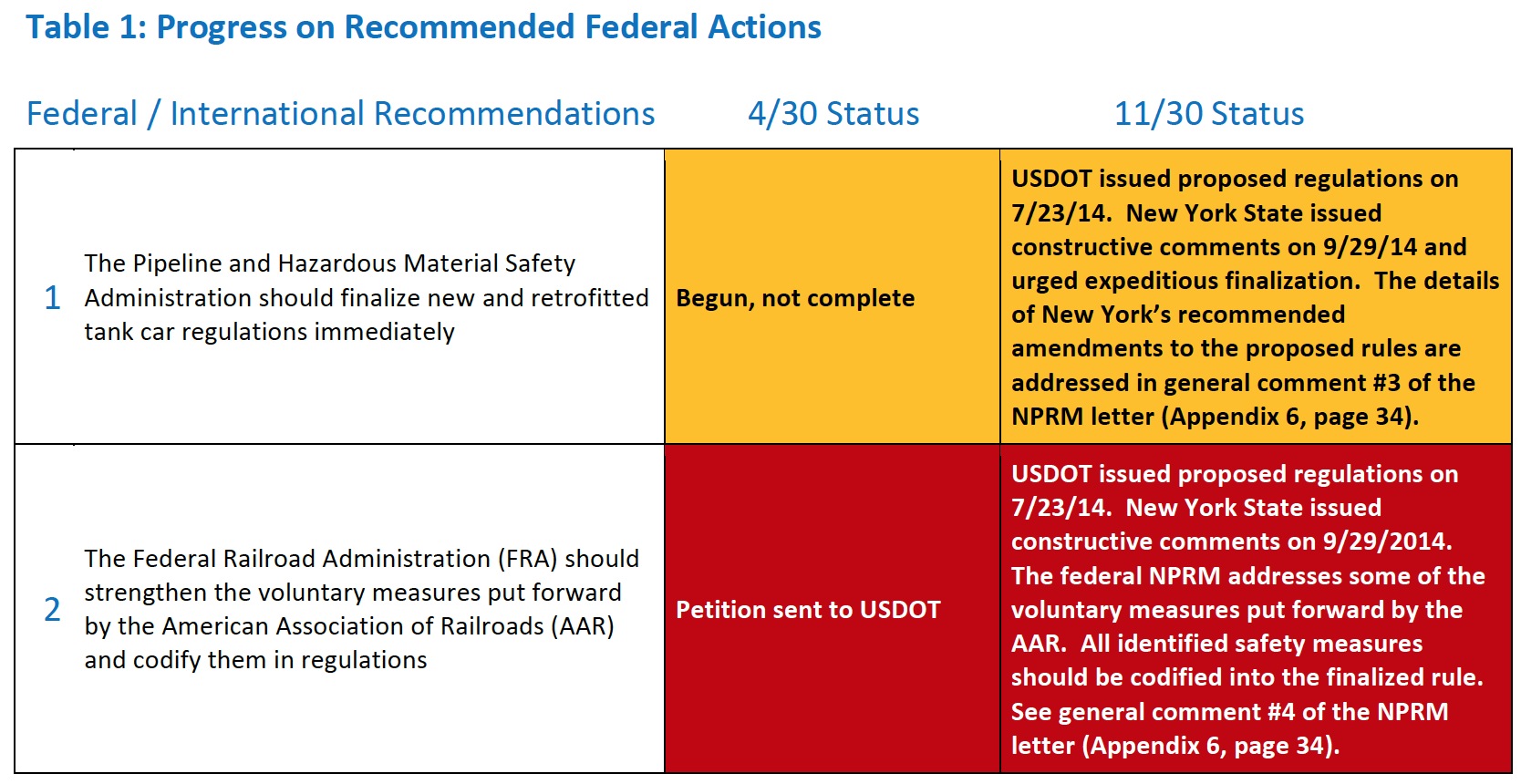NEW YORK STATE ENERGY RESEARCH AND DEVELOPMENT AUTHORITY (NYSERDA)
Introduction
North American production of crude oil has boomed in the last five years, helping to position the United States as the leading worldwide producer. The Bakken shale oil formation, which underlies parts of Montana, North Dakota, Saskatchewan, and Manitoba, is responsible for much of the new oil production in the U.S. and Canada. In the absence of pipelines from the Bakken formation, railroads transport much of this newly-produced crude oil to refineries and ports across the country. Domestic shipments of crude oil by rail have grown from 9,500 train car loads in 2008 to 407,642 loads in 2013, an increase of over 4,000 percent.
Despite having no refineries, as much as 1,000 miles of New York State’s 4,100-mile rail network is part of this rail pipeline from the northern Great Plains. The Port of Albany has become a major hub for crude oil transshipment and storage, receiving crude oil by rail and transferring them to ships or barges that further transport the crude oil down the Hudson River. Significant volumes pass by rail through the Capital Region en route to refineries in the Mid-Atlantic States. Communities in 22 counties, including Buffalo, Syracuse, Utica, Albany and Plattsburgh as well as nearly all of the state’s major waterways, are subject to this network.
In recognition of the increased risk of accidents and public concerns associated with the significant volume of crude oil transported through New York State, on January 28, 2014, Governor Andrew M. Cuomo issued Executive Order 125 (EO 125), directing state agencies to immediately conduct a coordinated review of New York State’s crude oil incident prevention and response capacity. In EO 125, Governor Cuomo called upon state agencies to address the following specific issues:
(i) the State’s readiness to prevent and respond to rail and water incidents involving petroleum products;
(ii) statutory, regulatory, or administrative changes needed at the State level to better prevent and respond to incidents involving the transportation of crude oil and other petroleum products by rail, ship, and barge;
(iii) the role that local governments across the State play in protecting their communities and their residents from spills of petroleum products shipped by rail and water; and
(iv) enhanced coordination between the State and federal agencies to improve the State’s capacity to prevent and respond to incidents involving the transportation of crude oil and other petroleum products by rail, ship, and barge.
On April 30, 2014, five state agencies submitted to the Governor a report entitled “Transporting Crude Oil in New York State: A Review of Incident Prevention and Response Capacity” (EO 125 Report). These agencies included the Department of Transportation (NYSDOT), Department of Environmental Conservation (NYSDEC), Department of Health (NYSDOH), Division of Homeland Security and Emergency Services (DHSES), and Energy Research and Development Authority (NYSERDA). The report provided an overview of the crude oil boom and New York State’s capacity to effectively prevent and respond to incidents involving the transportation and storage of crude oil. It included 27 recommendations for action by the federal government as well as steps that could be taken by state and local governments and industry.
Progress Report on Report Recommendations
Since the EO 125 Report was issued, New York State agencies have continued to implement the recommendations identified in the report and continue to press actions needed at the federal level and from the crude oil production and rail transport industries. This status update outlines the many actions taken by State agencies over the past six months to work with federal and local partners, to implement new procedures, and to work with the oil production and transportation industries to best protect New York’s citizens and resources from the risk posed by crude oil shipments. As further detailed in this report, the State will continue to address the vulnerabilities posed by crude-by-rail transport and urge the federal government and affected industries to act swiftly to address issues over which the State has no authority.
Download full version (PDF): Transporting Crude Oil in New York State
About the New York State Energy Research and Development Authority (NYSERDA)
www.nyserda.ny.gov
The New York State Energy Research and Development Authority (NYSERDA), a public benefit corporation, offers objective information and analysis, innovative programs, technical expertise, and funding to help New Yorkers increase energy efficiency, save money, use renewable energy, and reduce reliance on fossil fuels. NYSERDA professionals work to protect the environment and create clean energy jobs. NYSERDA has been developing partnerships to advance innovative energy solutions in New York State since 1975.
Tags: Crude Oil, New York, New York State Department of Health, New York State Energy Research and Development Authority, NY, nyserda







 RSS Feed
RSS Feed